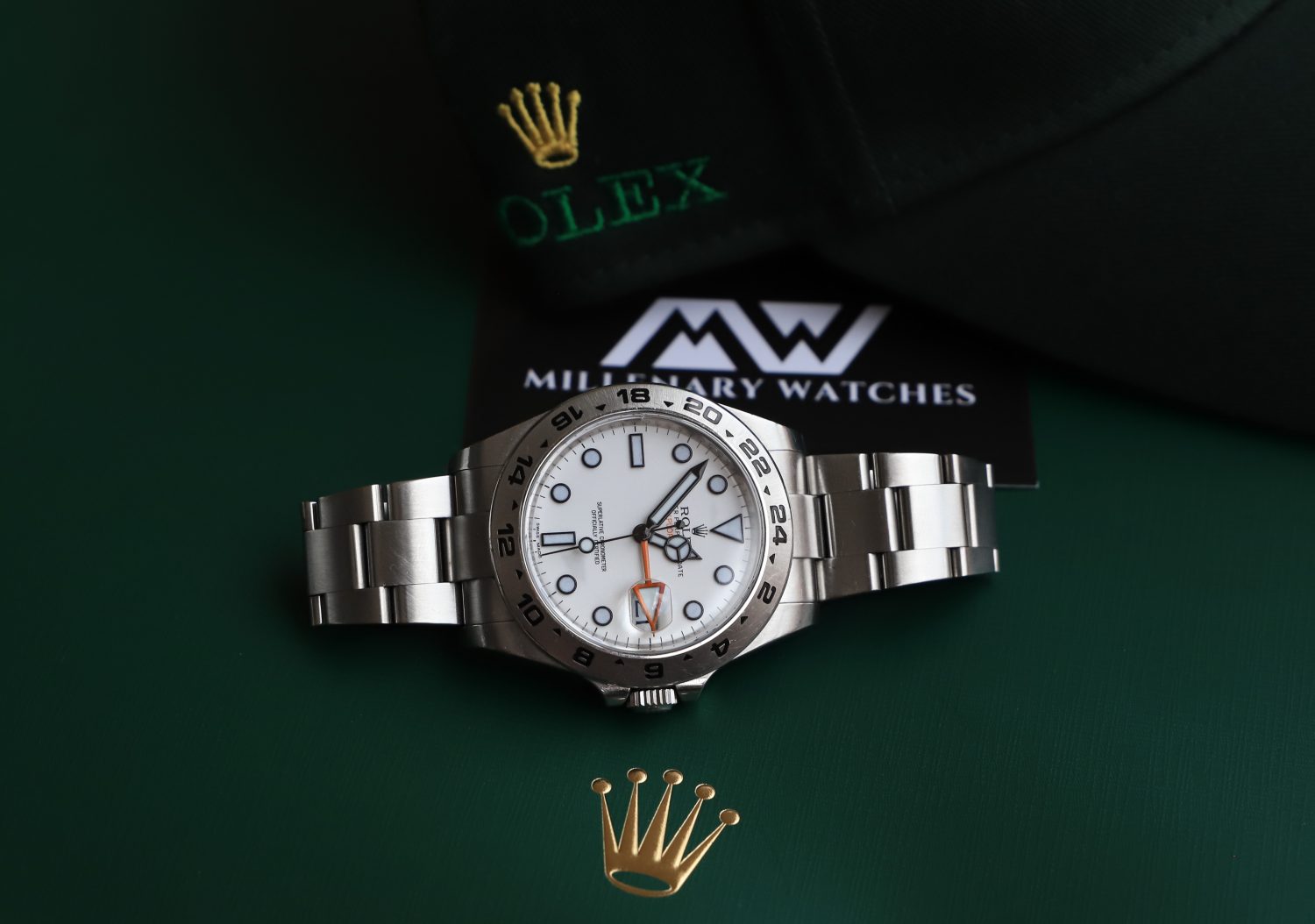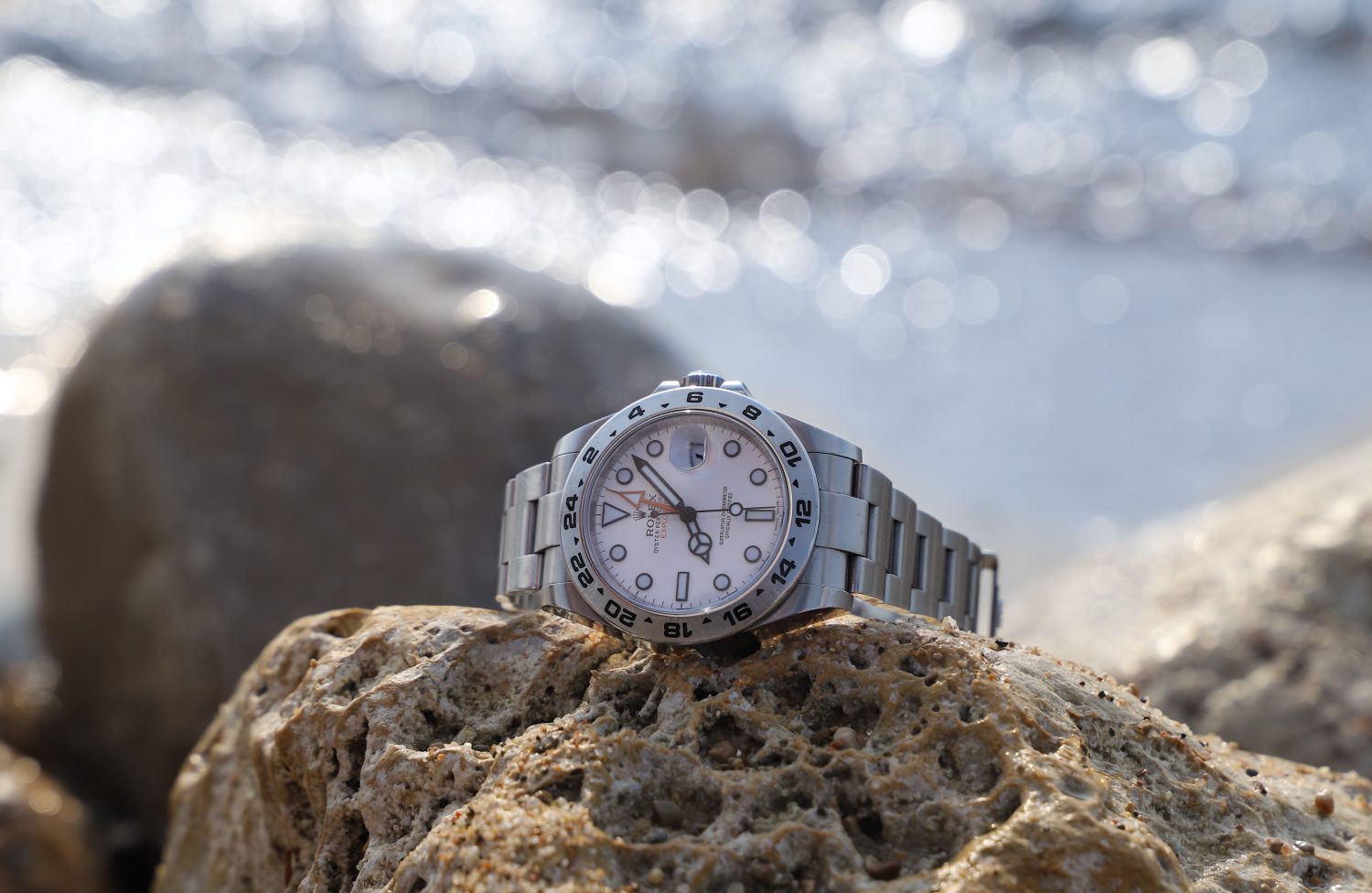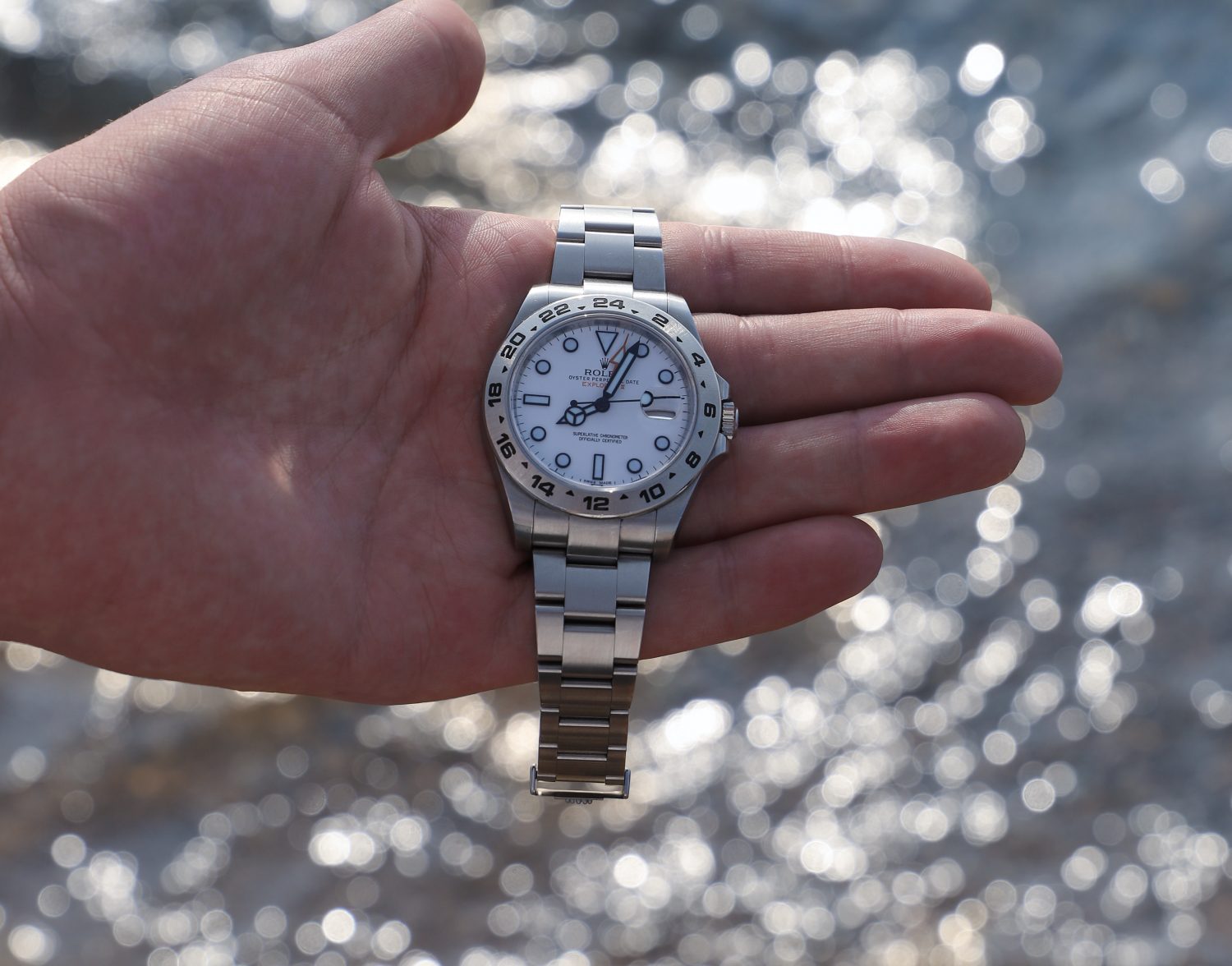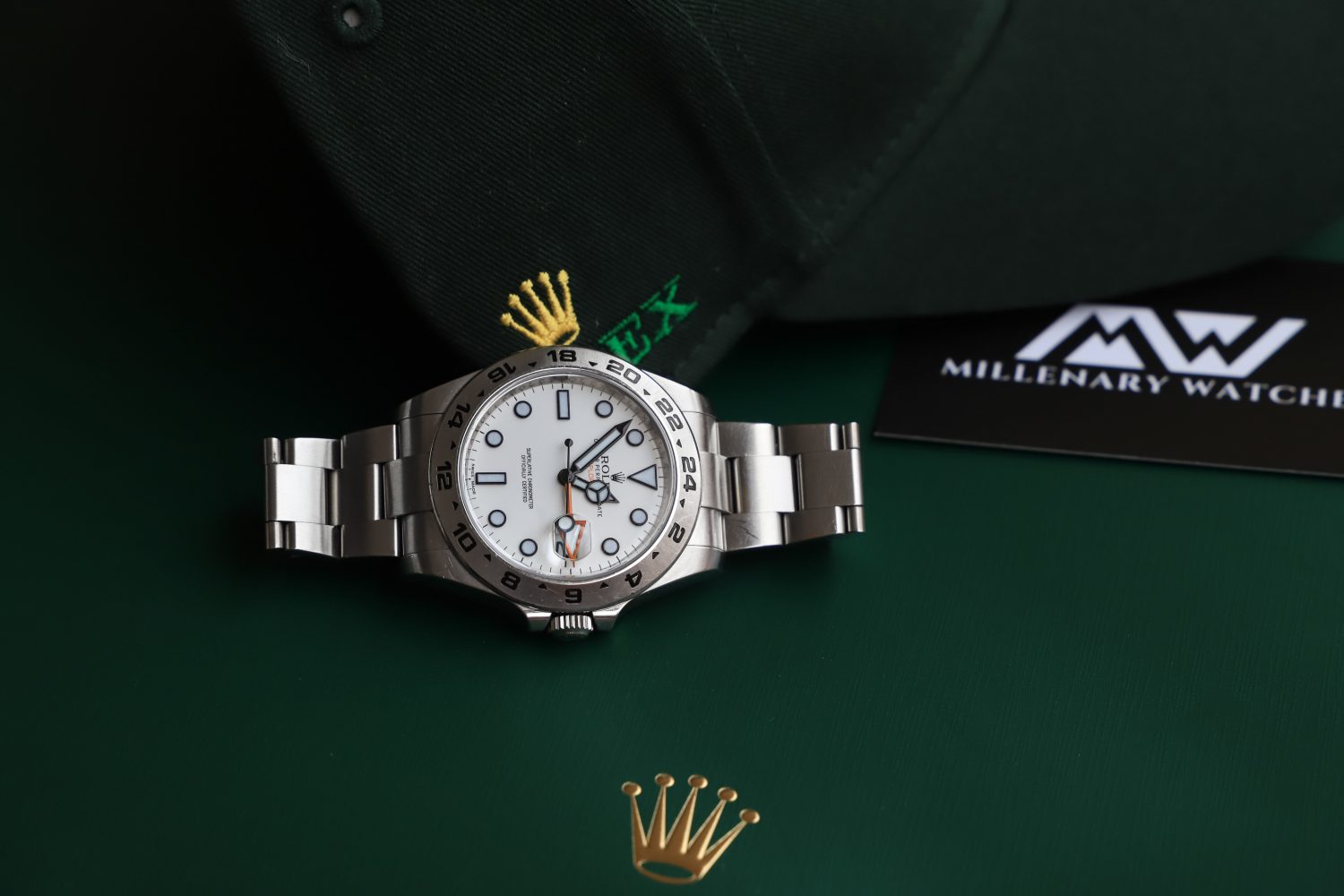
Rolex Explorer 216570 Review [Complete Guide]
The Rolex Explorer is a model in Rolex’s collection that has gone under the radar for many years. Often neglected due to the popularity of other Rolex sports watches, the Explorer is a watch that perhaps has not gotten the level of attention that it deserves.
But just like all Rolex models, the Explorer is a model that has an interesting history of why it was made, and how it has been used. In true Rolex fashion, this contributes to making this watch so much cooler, as it has gotten a chance to be put to test and show what it is really capable of.
Like most models, the Explorer II has had a few different references over the years. Each is a result of improvements and refinements from the previous model in order to create a better, more durable, reliable, and high-quality timepiece.
The Rolex Explorer II 216570 is the second most recent Explorer II model. It was first released at Baselworld in 2011 and was replaced by the updated reference 226570 in 2021.
In this article, we’re looking closer at the Rolex Explorer II 216570 – the toughest Rolex watch made for explorers.
Rolex Explorer 216570 complete guide & Review
The Rolex Explorer II is part of Rolex sports collection (also known as the Professional range) as it is a robust and sporty timepiece developed to be able to take a beating and handle rough conditions.

In regular Rolex fashion, when it comes to watches, they are more about evolution, not revolution. And this is why the original Explorer II of the 1970s is surprisingly similar to the modern-day 216570.
When this watch was launched in 2011, it was big news, as it was announced to have a 42mm case which is larger than any other explorer prior. Furthermore, at its launch, it was announced to have a new movement never seen in any other model. And perhaps the most striking part is its orange 24-hour hand in homage to the reference 1655 “Freccione” Explorer II of the 1970s
Now, as the name suggests, this watch was originally made as a tool watch for explorers that would manage harsh conditions. Similar to how the Explorer 1 was made for the expedition for climbing mount Everest.

While most Explorer 216570 owners will never climb a mountain with their watch, it is about what the watch represents, and most importantly: how surprisingly well this watch works for everyday use.
Now, as mentioned, since its launch in 2011, the Explorer 216570 has always stood in the shadow of the Submariner, GMT-Master, and Daytona. But with the increased demand for, and difficulty in getting a stainless steel sports Rolex watch in recent times, more and more people have widened their views and started looking at the second-best thing. This has allowed people to discover the Explorer 216570.

The Explorer 216570 is sporty, universal, and surprisingly works just as well with swim trunks as it does with a suit. Plus, it can take a whole lot of beating, and still keep the time perfectly. Sounds like the best of both worlds, right?
Explorer 216570 Case
Probably the biggest surprise to people when the Explorer II was launched in 2011 was the fact that it was announced to have a 42mm case. This is quite large on paper, especially considering the previous Explorer reference 16570 which is 40mm in diameter.
But a benefit of a larger case is, of course, a larger dial, which also helps improve the legibility – something that Rolex has made very clear is a priority of this exact model. But despite the size increase, it seems like the market actually enjoys the additional 2mm in size. And let’s not forget that it is supposed to be a robust and sporty watch because, with that in mind, a small case size just doesn’t cut it.

When trying it on, you will probably be surprised at the fact that the size is not perceived as large as one might think. This is also contributed by the fact that the casebook is completely flat which enables the watch to sit slimmed on the wrist.
Like all Rolex watches in steel, the 216570 is made of 904L stainless steel. It is equipped with a sapphire crystal on the front and a solid case back on the rear.
One of the most recognizable elements of the watch is its fixed stainless steel bezel with 24-hour markings. A problem with this bezel is of course that it is quite prone to scratching so over time, it will accumulate a lot of scratches. Plus, the numerals on the bezels have black color filled in, and over time, this color slowly fades away just like you can see on older Daytona watches. With this in mind, and that Rolex now has moved towards ceramic bezels on the Daytona, it is not unlikely that we will see a ceramic-bezel Explorer II in the future. But only time will tell.

The finish on the bezel is very nicely made, with a large grain brushed surface.
Coming to the dial, the instantly recognizable element is, of course, the bright orange 24-hour hand. Both the black dial and white dial versions have this orange bezel.
When it comes to legibility, it is difficult to say whether the white dial version or the black dial version is the best.
The white dial version ”polar” has blackened markers which, against the white dial make for a great contrast. The white dial Explorer is actually the first Rolex watch to feature a black frame around the hour indices.
The black Dial Explorer, on the other hand, has white luminous mass against the black dial, which of course is a great contrast that offers excellent legibility.
Both the white and black version has the ”Explorer II” text printed in orange to match the GMT hand. As you would expect, the hands and indices are quite large. This means that the Explorer 216570 offers one of the best legibilities in Rolex’s range.

The bright orange and oversized 24-hour hand is easy to identify and distinguish from the other hands. At night and in dark environments, the bright Chromalight luminosity will help you tell the time.
On the dial, you can also find a date window, which is enlarged by the cyclops attached to the sapphire crystal.
Explorer II 216570 Movement
If you open up the case back, you will find that the Explorer 216570 is powered by the Rolex caliber 3187. When this watch was launched, this was a completely new movement developed for this model. It beats at 28,800 beats/hour at 4 Hertz and has all kinds of quirky features in order to live up to the model’s name.

It uses a blue Parachrom hairspring, a Breguet overcoil, a large and variable inertia balance wheel, and is protected by Paraflex shock absorbers. The date is an instantaneous jump at midnight, the 24-hour hand is independently adjustable with rapid setting on the hour. The movement features stop seconds, or in vintage Rolex terminology, it “hacks”. There are 31 jewels and the cal 3187 has a power reserve of about 48 hours.
The Paraflex shock absorbers give the watch additional magnetism and shock protection which is great for reliability and quality.
Explorer II 216570 Bracelet
As you would expect, the Explorer 216570 is equipped with a sporty and robust Oyster bracelet.
The bracelet is brushed and has an Oyster clasp with an Easylink extension system.

If you’re familiar with the Oyster bracelet, you will know that the bracelet is extremely comfortable. In addition, the bracelet matches the watch perfectly.
Is the Rolex Explorer II A GMT?
Yes, the Rolex Explorer 216570 is a GMT watch thanks to its additional GMT hour hand and 24-hour bezel. But unlike most GMT watches, the 216570 has a fixed 24-hour bezel rather than a 12-hour rotating bezel. This means that the Explorer can only keep track of one additional timezone.
How thick is a Rolex Explorer II?
The Rolex Explorer II 216570 has a thickness of 12.5 mm.
When did the Rolex Explorer II come out?
The first Rolex Explorer II was released in 1971 and has the reference number 1655.
When comparing the latest 2216570 and the 1655, you will notice that they are very similar in design, even though 4 decades passed since it was released.
The big orange GMT hand is there, the fixed stainless steel bezel, the Oyster case and bracelet, and the matte dial.
The evolution of the Rolex Explorer II references goes like this:
- 1971: reference 1655
- 1985: reference 16550
- 1989: reference 16570
- 2011: reference 216570
Is Rolex Explorer 216570 waterproof?
The Rolex Explorer II 216570 is waterproof to 100 meters. Remember, it is not a dive watch, but it is meant to manage any situation that an explorer will face. This may mean crawling through mud, swimming through a river, etc.
Or.. for most Explorer II 216570 owners, it will mean a whole lot of desk diving.

Does Rolex Explorer II bezel rotate?
No, the bezel of the Explorer II is fixed and does therefore not rotate. This is what prevents the watch from keeping track of multiple time zones simultaneously.
Conclusion
The Explorer II 216570 is a model from Rolex that has not gotten the attention it deserves. The Explorer 216570 is sporty, it is modern, and it is extremely universal, and works on surprisingly many different occasions.
While the size of 42mm may scare some people away, it really needs to be experienced first. The flat case back makes the watch sit quite slimmed on the wrist, and the sporty Oyster bracelet makes this watch very comfortable to wear.
In terms of design, the 216570 is a truly timeless timepiece. It is similar to the design of the first Explorer 1655 yet has been refined and improved for reliability and robustness.
The bright orange GMT hand adds an appealing splash of color.
Many people have neglected this model, in favor of the Submariner, Daytona, and GMT-Master, but with the increased demand for these models, more and more people have started turning to the Explorer 216570 and understanding its charm and what it stands for.





Good day, I am looking at the possibility of purchasing a Explorer II 216570 with white dial, preferably with box and papers. I am also looking to buy a Rolex Turn-o-graph Thunderbird with blue dial, red seconds hand and red date wheel. I’d be grateful if you could get back to me on these questions.
Hello Ric,
Thank you for your comment. Please email us and we will be able to assist!
Kind regards,
Millenary Watches